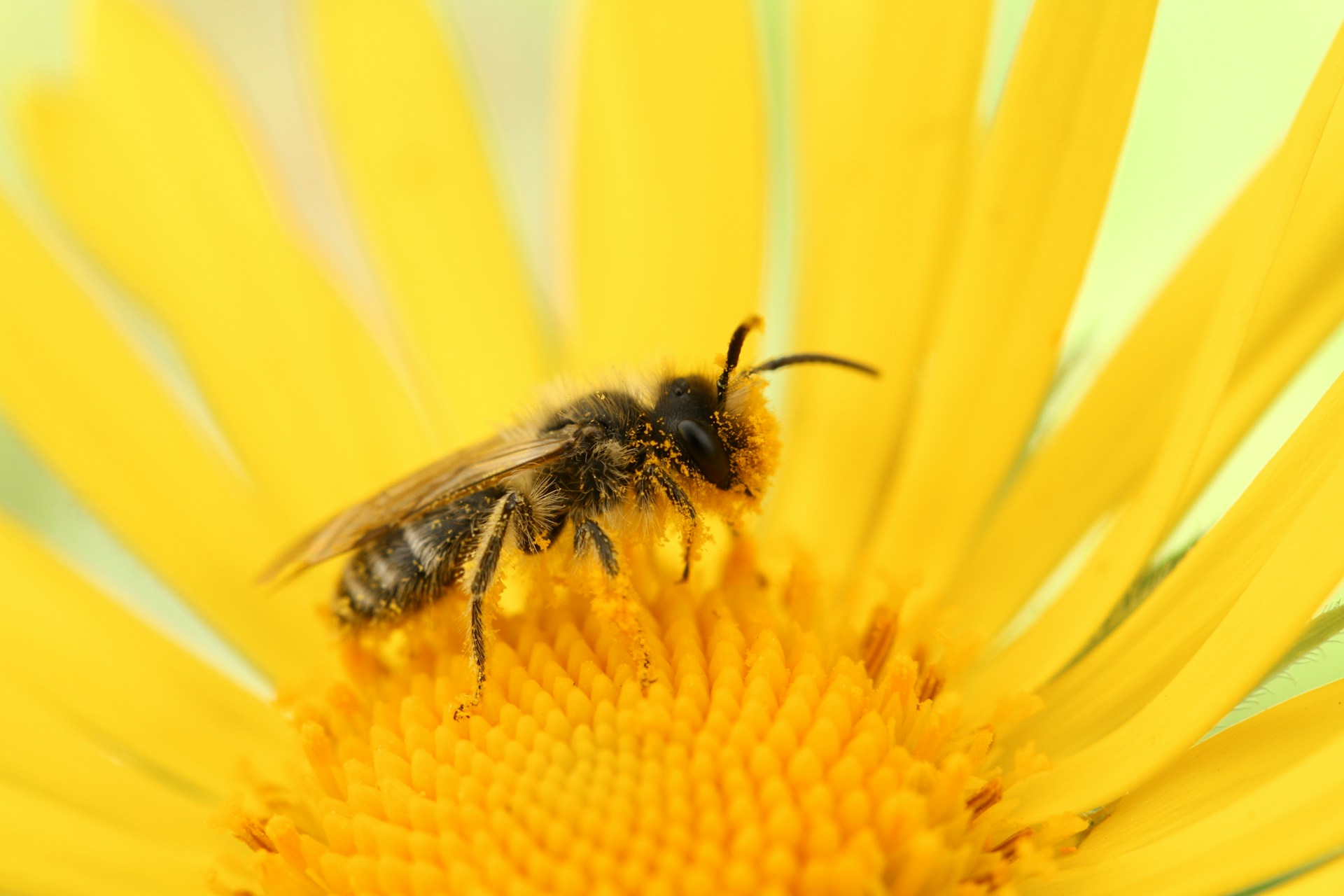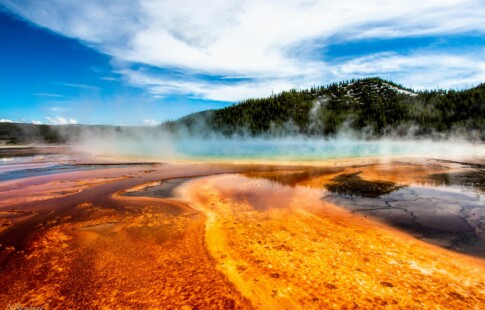
Unbee-lievable: 5 Different Types of Bees Making a Buzz
We are reader-supported. When you buy through links on our site, we may earn affiliate commission.
Bees are busy little critters that play a critical role throughout ecosystems and human lives. However, you may not realize several different types of bees are right in your backyard. From solitary species to buzzing colonies, you’ll discover an array of bees and their importance to people and the planet.
5 Different Types of Bees You Should Bee Aware Of
Take a closer look at your garden. You might recognize there are several different types of bees swarming around. In fact, there are thousands of bee species around the world, many of which can be found in North America. Here are five bees you’ve likely seen before.
1. Honey Bees
Honey bees are among the hardest-working bee species, accountable for pollinating 80% of all flowering plants and over 130 fruits and vegetables.
Hives consist of a queen bee, drones and workers. The worker bees are all females — unable to mate — and are responsible for forming honeycombs, foraging for nectar and pollen, and defending the hive from intruders. Drones are all males and only reproduce with the queen.
Worker bees typically only live for five to six weeks during the spring and summer. Their first two weeks are spent caring for the hive, while the rest of their lives are spent outdoors foraging.
2. Bumble Bees
Bumble bees are among the most critical of all the different types of bees. Forty-six bumble bee species live in the U.S., of which 26% are of concern regarding their conservation. Scientists worry several bumble species are already extinct.
These fuzzy, busybodies pollinate wildflowers and crops, and their hairiness allows them to transport a lot of pollen at once. You can find them in meadows, prairies, mountain ranges, savannahs, wetlands and farms where they eat nectar and pollen from flowers.
3.Carpenter Bees
Although carpenter bees resemble bumble bees, they are much more of a nuisance. You can usually find them around home exteriors, where they bore tunnels into wood to lay their eggs. They prefer unpainted and weathered pine, cypress and cedar trees and are less likely to bore into painted or treated timber.
Carpenter bees are solitary and do not live in colonies. Although the female bees’ sting is painful, they hardly ever do so unless bothered. Conversely, males don’t have stingers and are harmless.
4. Blue Orchard Mason Bees
You’ll typically see blue orchard mason bees in the spring, with the males emerging first. They prefer roses and help pollinate apples, plums and cherries.
Researchers have discovered that mason bees visit more flowers per minute than European honey bees and can easily transport pollen. Actually, they efficiently carry pollen on their bellies instead of their back legs.
5. Leafcutting Bees
Leafcutting bees are similar to blue orchard mason bees and are prevalent throughout North America. These non-aggressive bees are essential pollinators with a mild sting, making them easier to handle. They cut into leaves — but don’t eat them — and use the fragments to build their nests.
Leafcutters are solitary bees, with females taking care of raising their young. They usually live for two months and lay 35-40 eggs.
Why Pollinators Are the Bee’s Knees
Bee pollinators are crucial for people and the planet. For one thing, bees visit 90% of the world’s 107 crops, which is essential to sustaining the global food supply. Beekeeping also bears economic benefits, with the practice dating back to Mayan Mexico and the Aboriginal people of northern Australia 4,000 years ago.
Other reasons bees are essential include the following:
- They promote plant reproduction, growth and cross-pollination.
- Bees and plants have evolved together amid climate change.
- They’ve long been considered a critical part of spiritual and indigenous cultures.
- They help create medicines by ensuring healthier flora.
- Bees prevent soil erosion by enhancing plant strength and diversity.
Are Bees Disappearing?
Bees have steadily declined for over a decade, threatening our environmental, economic and social constructs. Without enough pollinators in agriculture, less food is made available to a hungry and growing population.
Since 2006, U.S. commercial beekeepers have reported a 30% annual decrease in honey bee colonies each winter. Historically, that number was only 10%–15%.
Significant threats — pesticide and fertilizer use, parasitic diseases, habitat loss, inadequate foraging and low genetic diversity — have also led to colony collapse disorder (CCD). In 2006 and 2007, agriculturalists noticed they were losing 30%–90% of their hives, resulting in CCD. While CCD cases are lower now than they were, it remains a problem.
According to a California study, widespread pesticide use has been particularly detrimental to blue orchard mason bee populations, affecting several generations after just one application.
Those exposed to imidacloprid — the most common insecticide ingredient used throughout the state — tend to have 44% fewer offspring and a 72% lower growth rate. Neonicotinoids are insecticides related to nicotine.
How Can You Help Save the Bees?
You can do your part to help save bee populations from demise and safeguard the world’s food supply and ecological well-being. If you’re brave, you might add a beehive to your backyard. Aside from the box, you’ll want a beekeeper’s suit, smoker and hive tools to protect yourself from stings.
A smoker should be used carefully and sparingly to calm aggravated bees. Otherwise, too much smoke is unhealthy and may hinder honey production. Allowing the bees to see you’re not a threat will ease their temperament gradually.
Planting a native garden is also beneficial. Native plants are naturally adapted to your local climate and are abundant in nectar and pollen. They are also easy to maintain, requiring little irrigation and nearly zero pesticides.
Always have at least three native plant species from spring to fall to ensure bees have enough of a food source to survive. Grouping plants by species is best, but there should be plenty of diversity to support other pollinators. You might also grow herbs, such as rosemary, basil, marjoram, and oregano, to attract bees to your yard.
To Bee or Not to Bee
Without question, bees are essential to sustaining life on Earth. With rising threats imposing on their population, protecting bees is necessary. Rather than trying to eliminate them, create a backyard oasis where they can thrive.
Share on
Like what you read? Join other Environment.co readers!
Get the latest updates on our planet by subscribing to the Environment.co newsletter!
About the author

Steve Russell
Steve is the Managing Editor of Environment.co and regularly contributes articles related to wildlife, biodiversity, and recycling. His passions include wildlife photography and bird watching.





